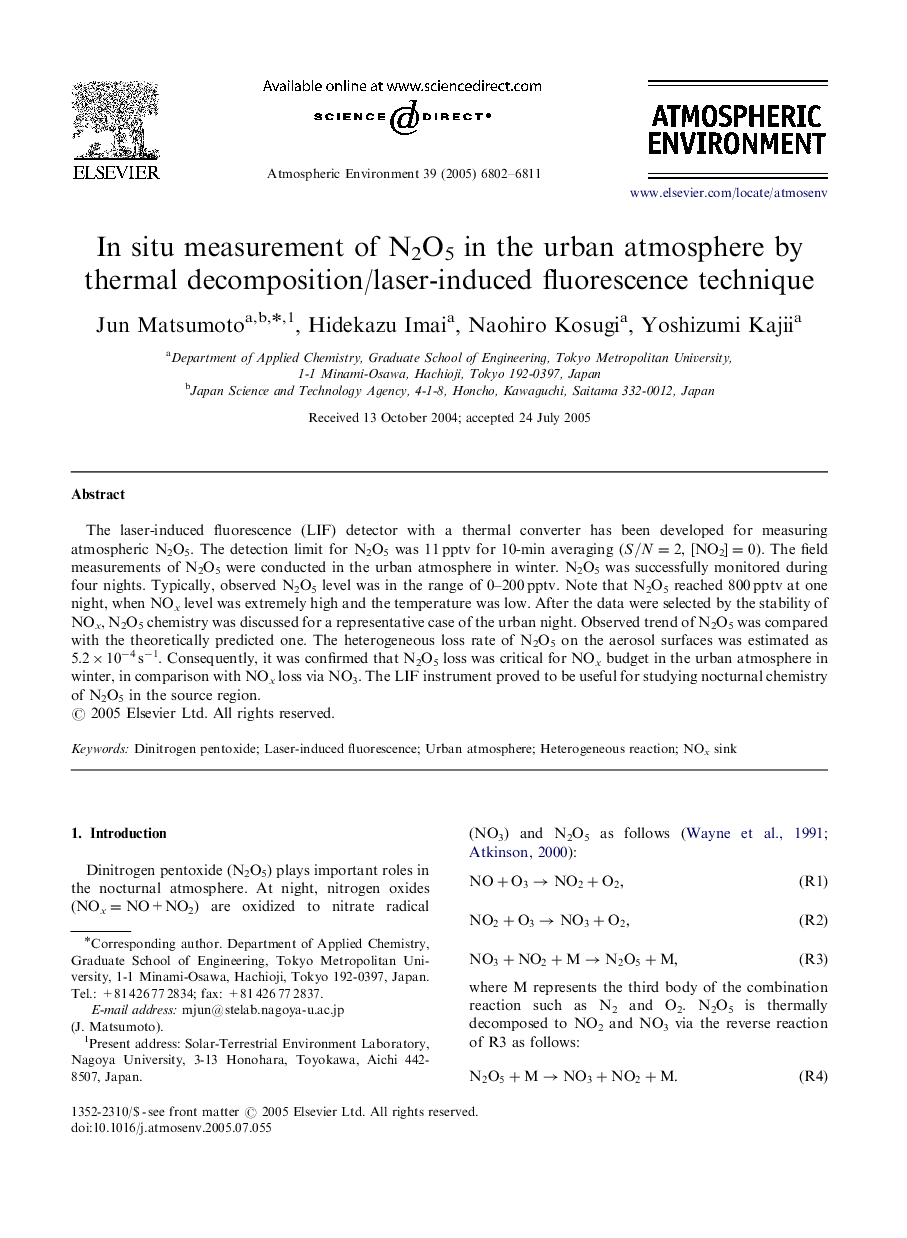| Article ID | Journal | Published Year | Pages | File Type |
|---|---|---|---|---|
| 4445140 | Atmospheric Environment | 2005 | 10 Pages |
The laser-induced fluorescence (LIF) detector with a thermal converter has been developed for measuring atmospheric N2O5. The detection limit for N2O5 was 11 pptv for 10-min averaging (S/N=2S/N=2, [NO2]=0). The field measurements of N2O5 were conducted in the urban atmosphere in winter. N2O5 was successfully monitored during four nights. Typically, observed N2O5 level was in the range of 0–200 pptv. Note that N2O5 reached 800 pptv at one night, when NOx level was extremely high and the temperature was low. After the data were selected by the stability of NOx, N2O5 chemistry was discussed for a representative case of the urban night. Observed trend of N2O5 was compared with the theoretically predicted one. The heterogeneous loss rate of N2O5 on the aerosol surfaces was estimated as 5.2×10−4 s−1. Consequently, it was confirmed that N2O5 loss was critical for NOx budget in the urban atmosphere in winter, in comparison with NOx loss via NO3. The LIF instrument proved to be useful for studying nocturnal chemistry of N2O5 in the source region.
